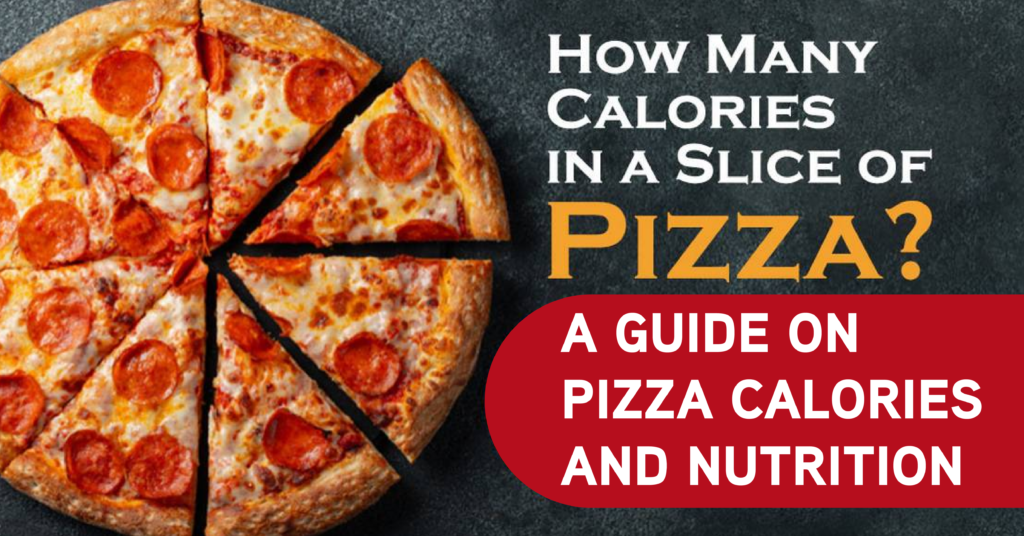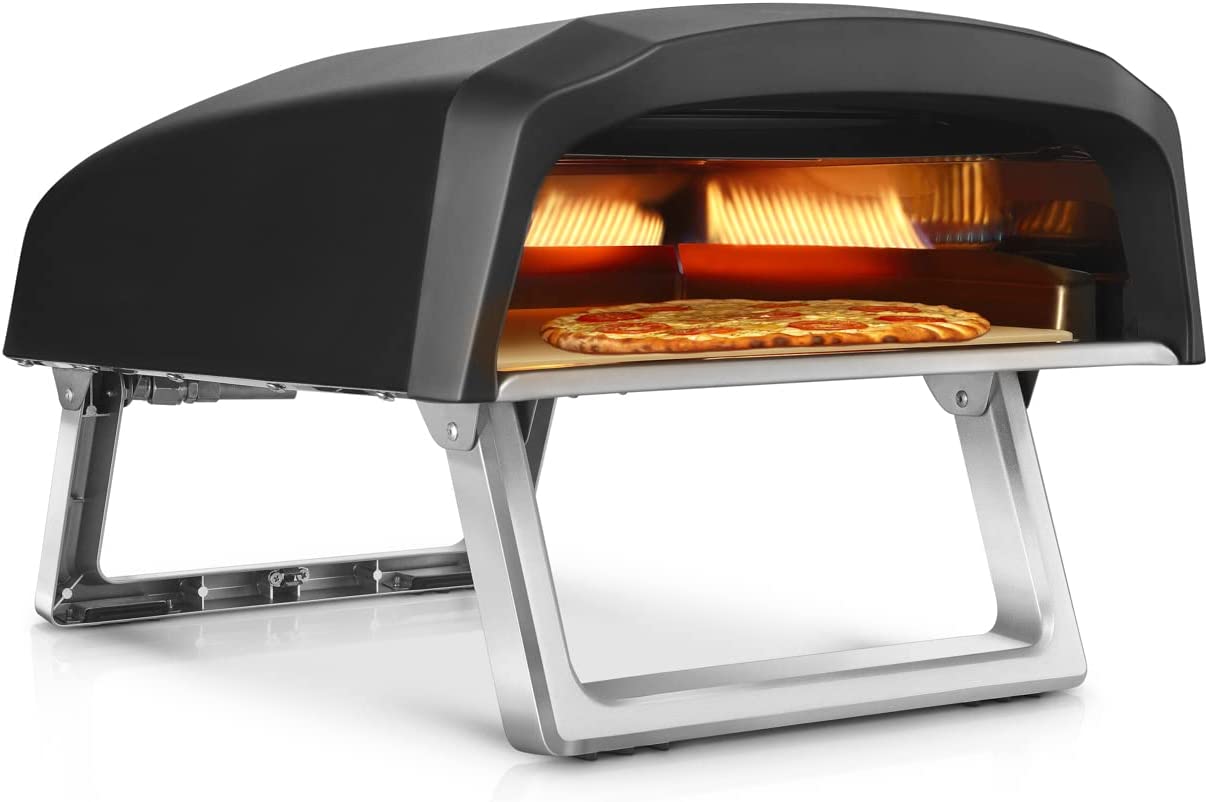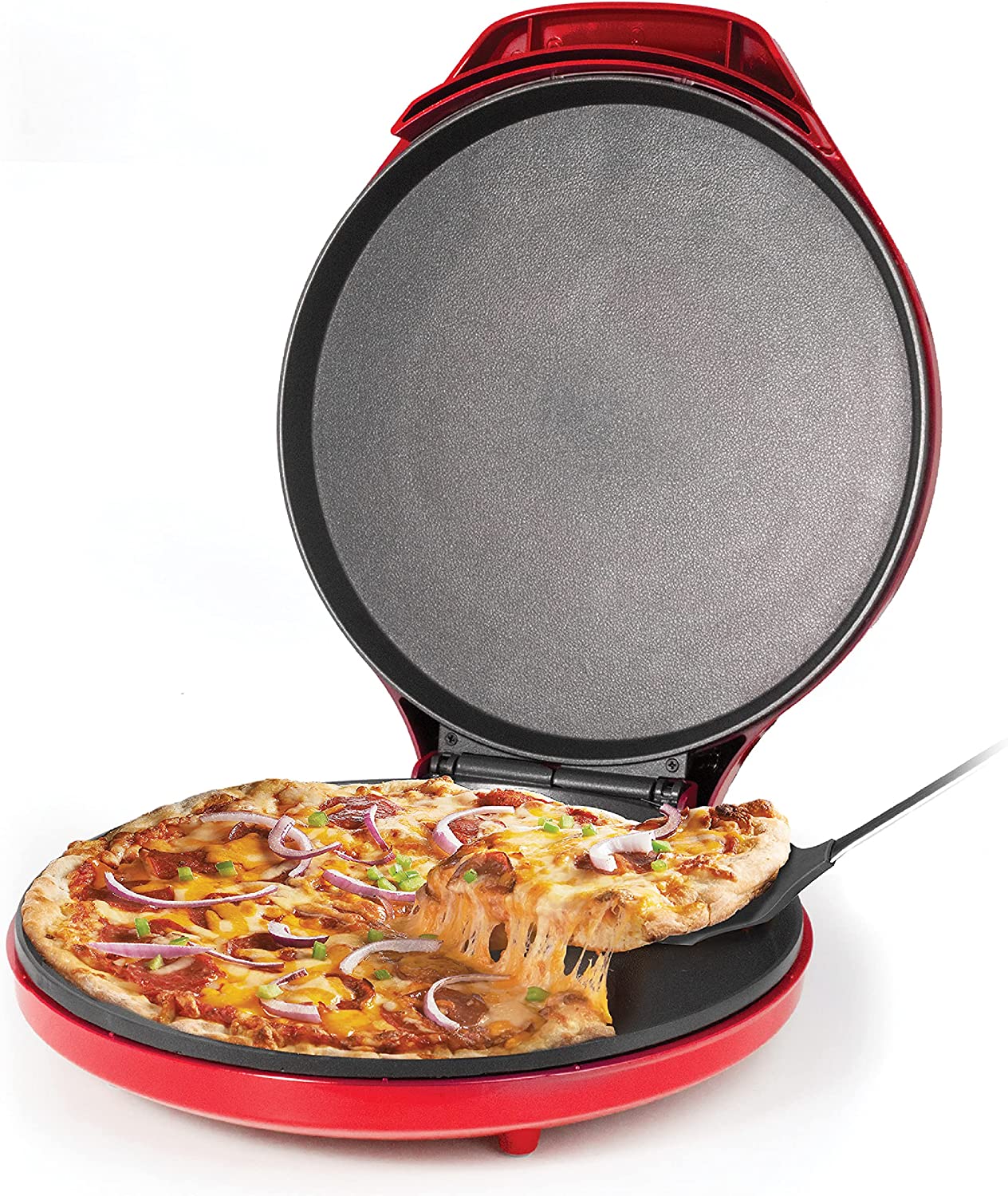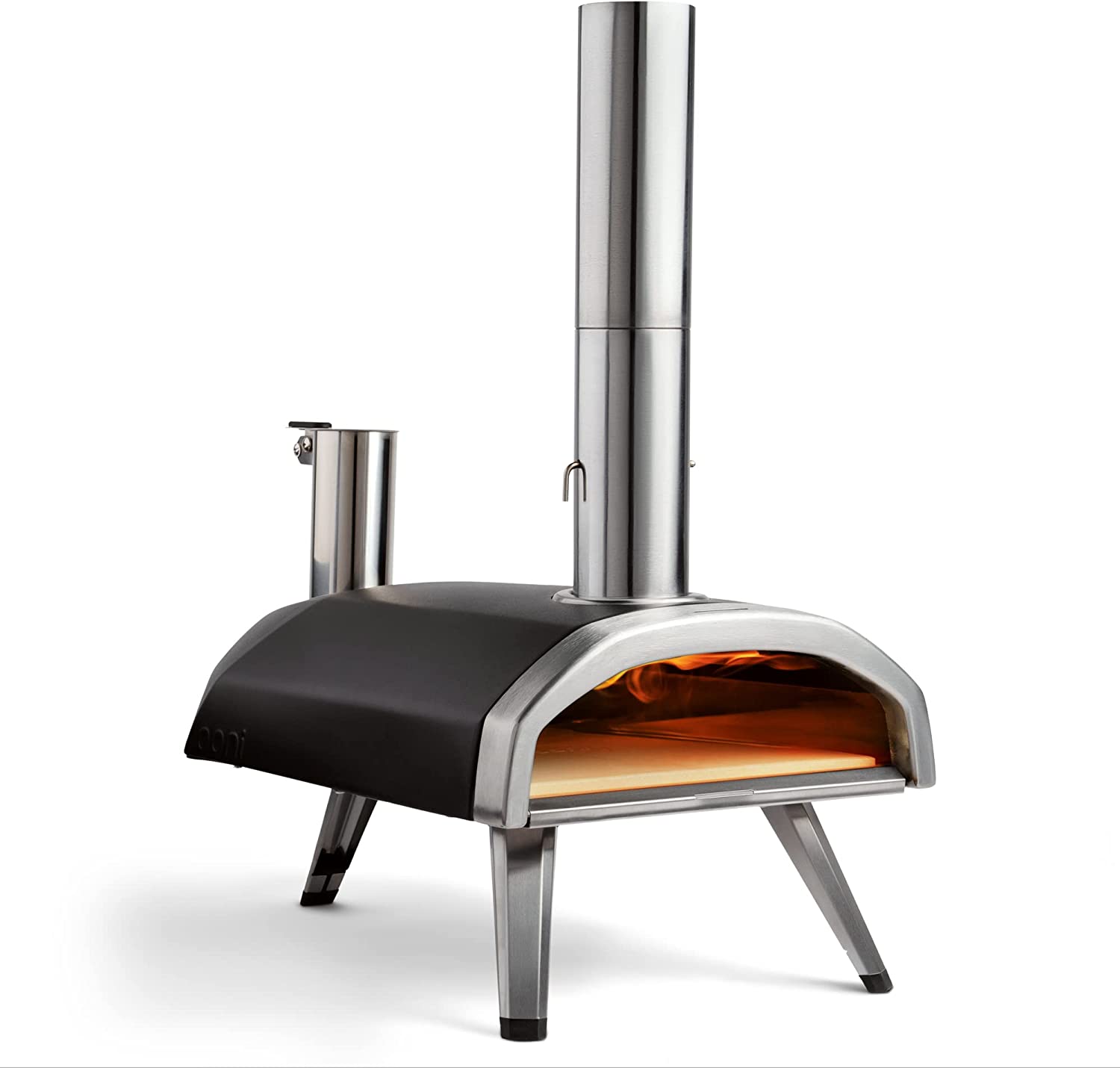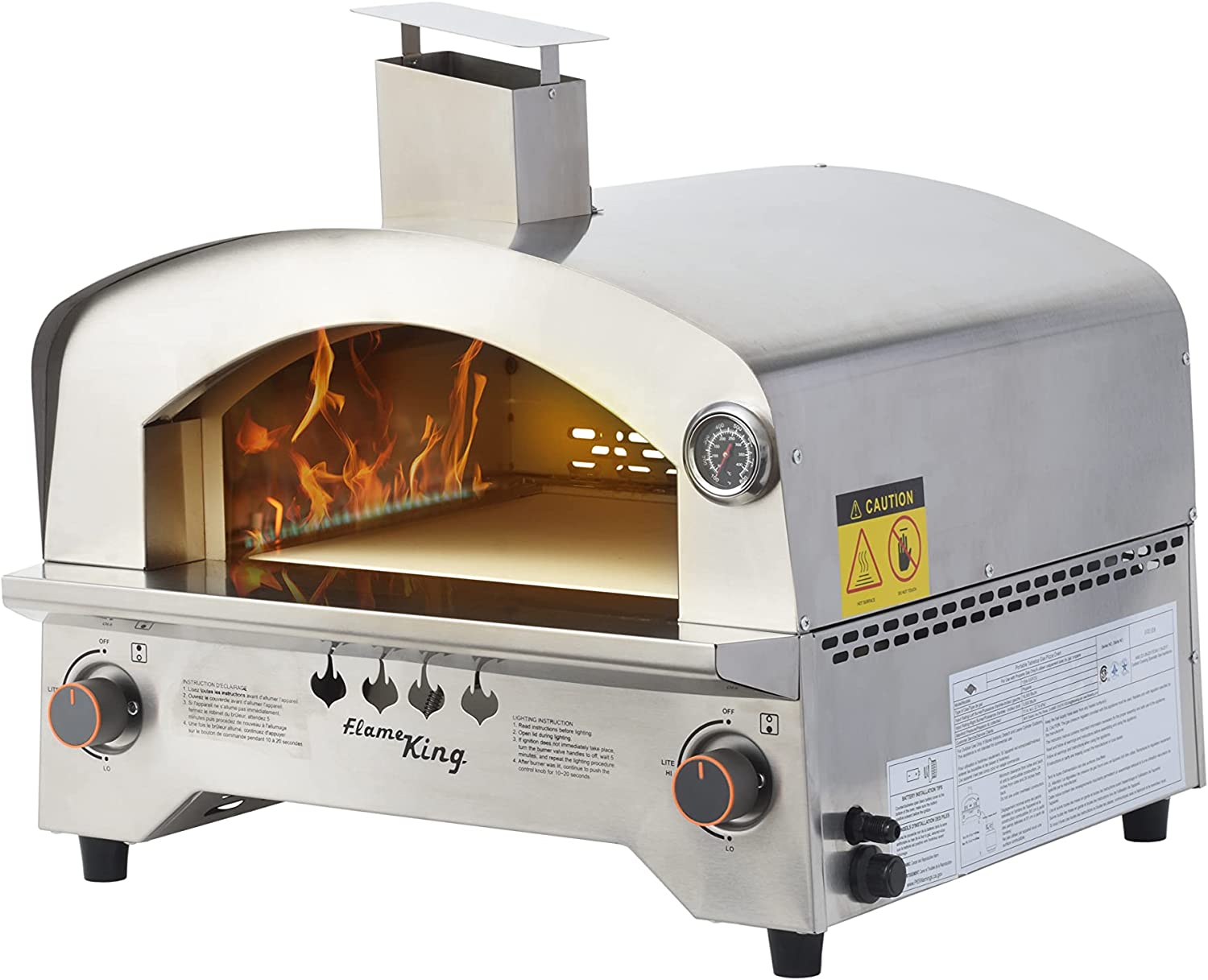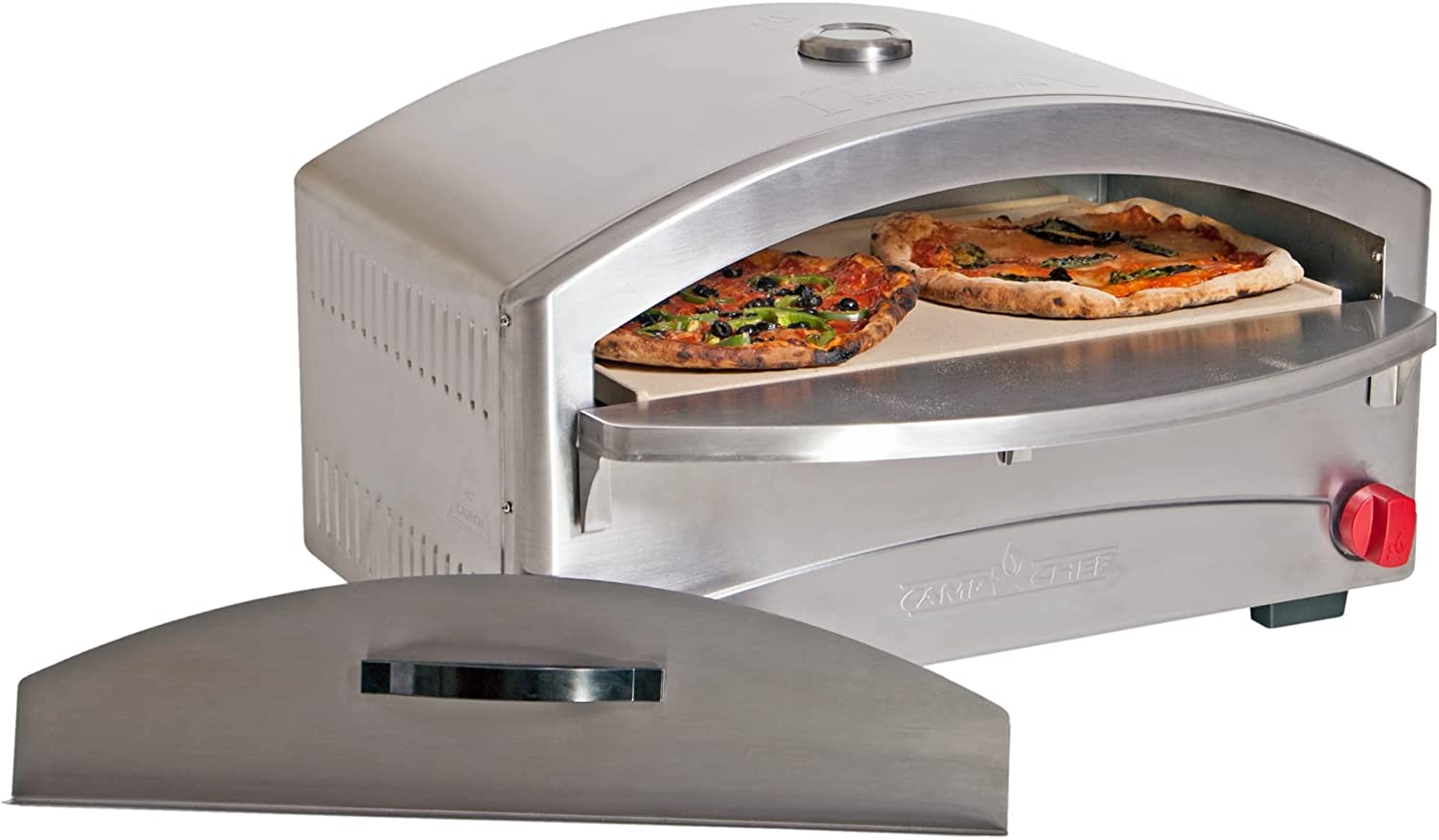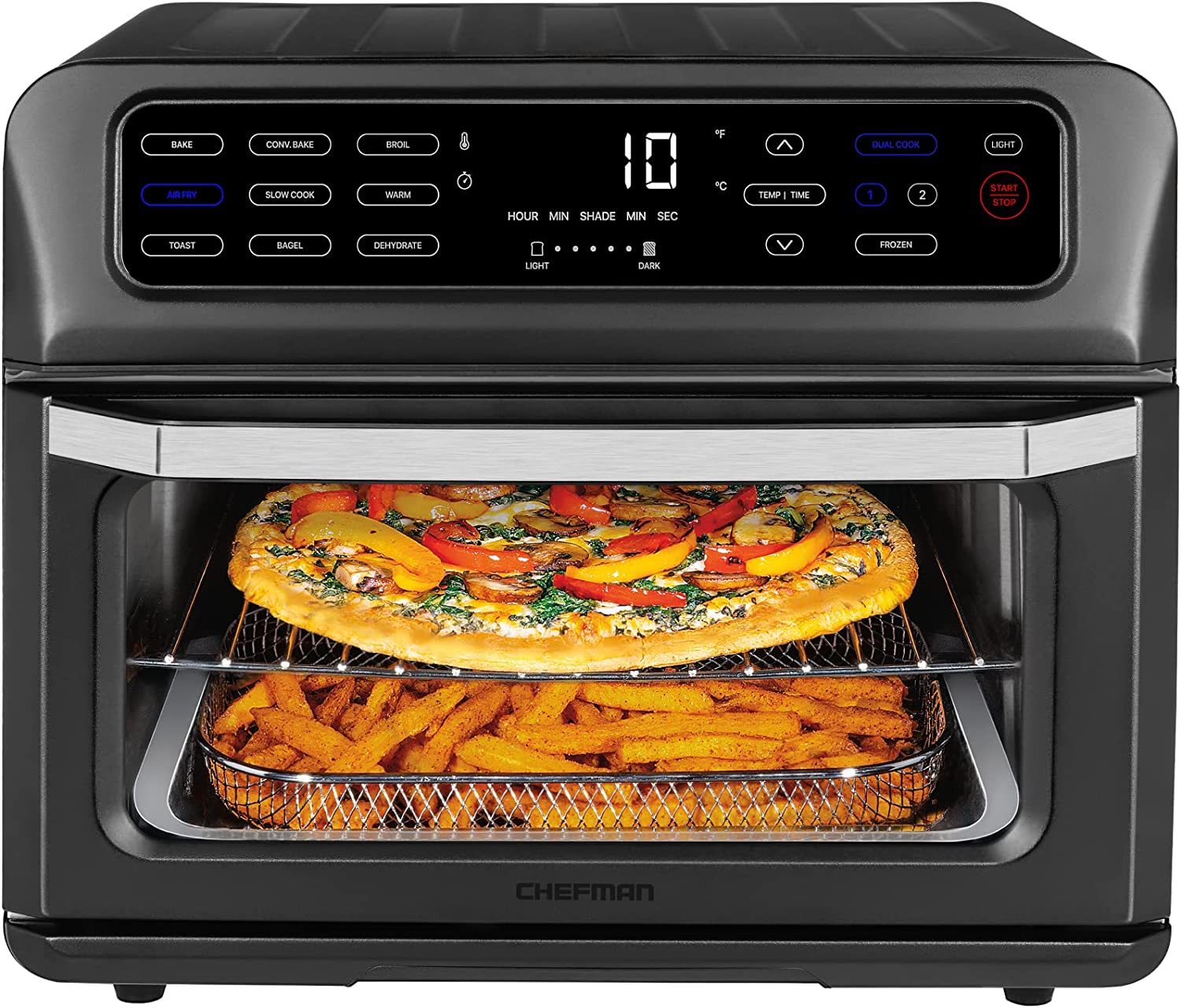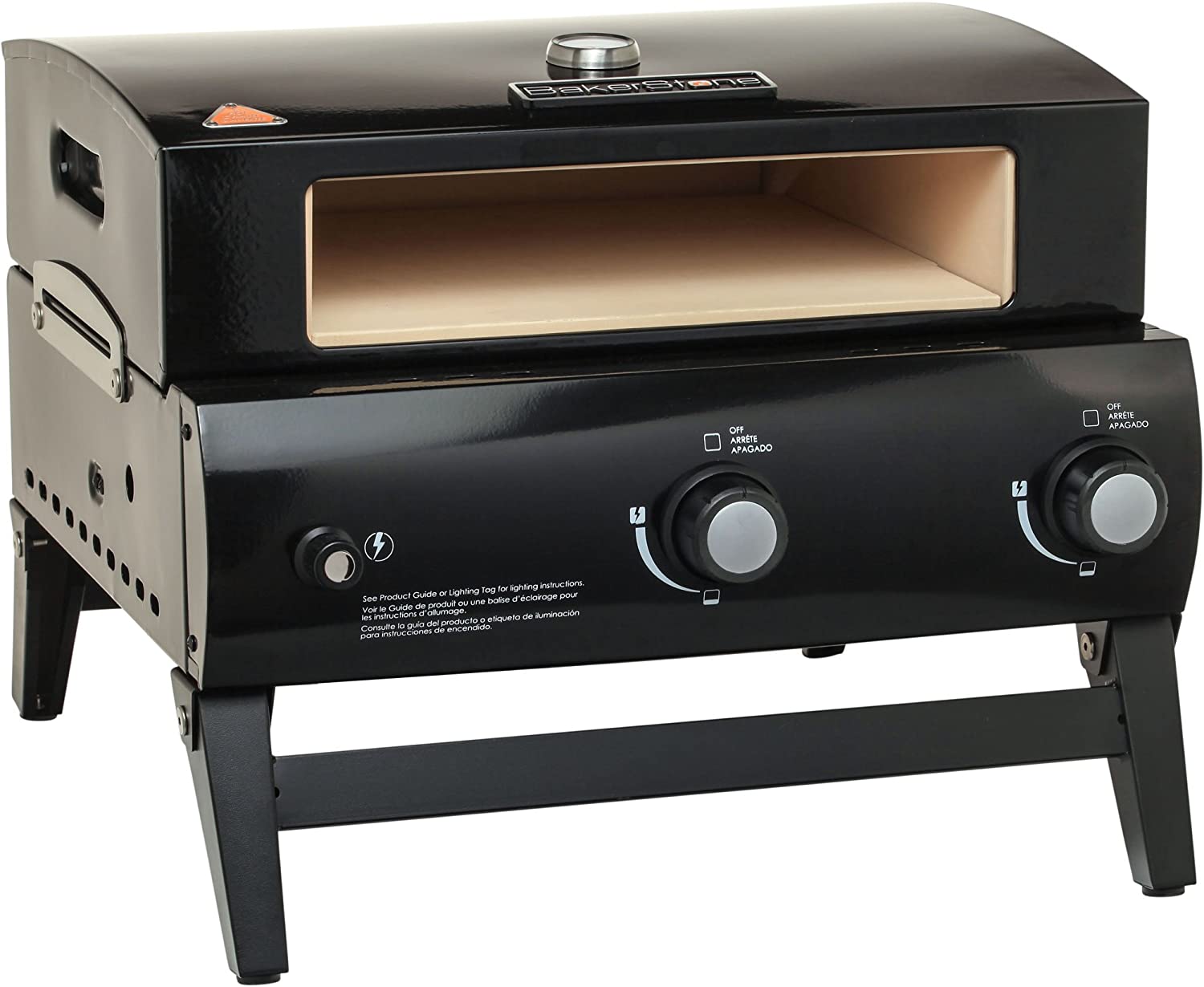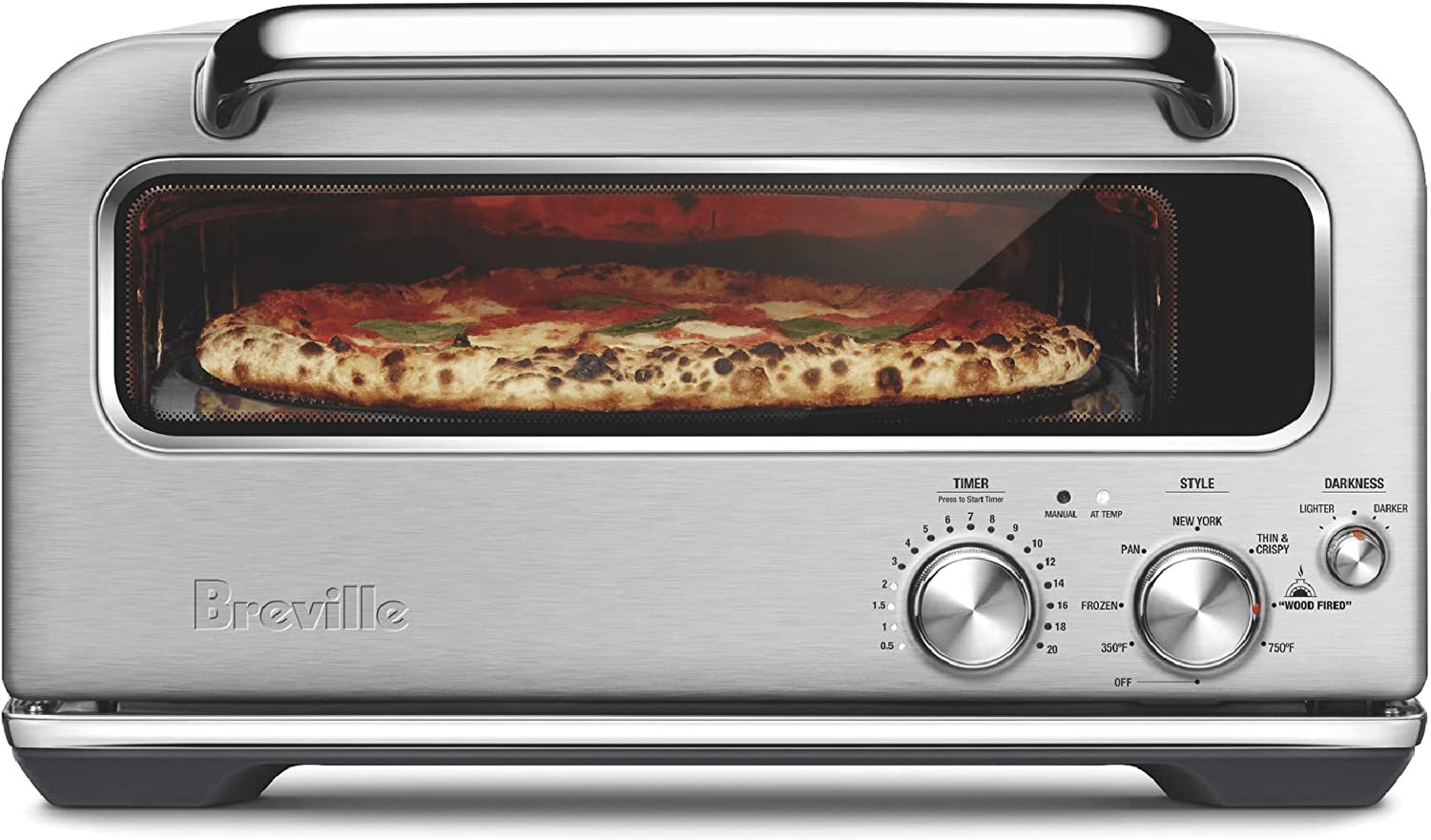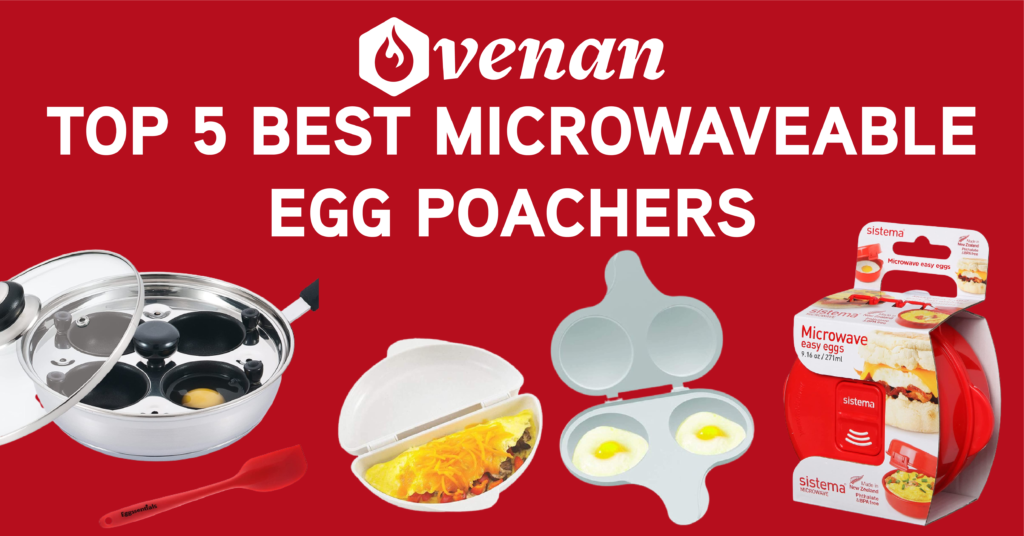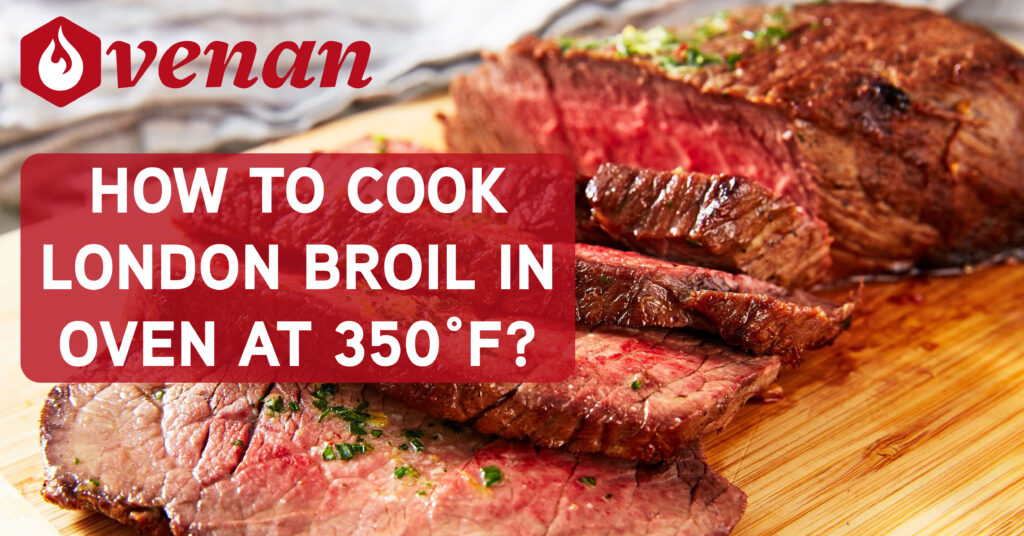Do you want to know “how many calories in a slice of pizza?” The answer is that an average piece of 12-inch pizza has at least 285 calories. You can find many calculators and charts online to count your pizza calories. The truth is, no single value is perfect. Pizza is one of the most popular foods in the world. Whether you’re enjoying it at a restaurant or making it at home, it’s hard to resist a slice of pizza. However, if you’re watching your calorie intake, you may be wondering how many calories are in a slice of pizza. In this article, we’ll take a look at the calorie content of pizza and give you some tips on how to make healthier pizza choices.
Pizza is a staple food in many households and restaurants, but it can also be a high-calorie indulgence. The calorie content of pizza depends on several factors, including the type of crust, toppings, and serving size.
How Many Calories Does a Slice Of Pizza Have, on Average?
The number of calories in a slice of pizza can vary widely depending on the type of pizza, the size of the slice, and the toppings. However, on average, a slice of cheese pizza (1/8th of a 14-inch pizza) contains approximately 200-300 calories. Adding toppings such as pepperoni, sausage, or extra cheese can significantly increase the calorie count. It’s important to note that the calorie count can also vary based on the crust type, with thicker crusts generally having more calories than thin crusts. It’s always a good idea to check the nutrition information provided by the pizza restaurant or manufacturer for an accurate calorie count.
Here Are The Top 9 Best Pizza Oven
What Determines the Calorie Content of Pizza?
The calorie content of pizza is determined by several factors, including the type of crust, toppings, and serving size. Here are some of the main factors that can affect the calorie content of pizza:
- Crust: The type of crust can significantly impact the calorie content of pizza. Thin crusts generally have fewer calories than thick crusts because they contain less dough.
- Toppings: The type and amount of toppings you choose can also affect the calorie content of pizza. High-fat toppings like cheese and pepperoni can add a significant number of calories, while vegetables can help keep the calorie count lower.
- Serving Size: The size of the pizza slice can also impact the calorie content. Larger slices will have more calories than smaller ones.
Calories in Pizza Slice by Topping
The number of calories in a pizza slice can vary based on the toppings used. Here is an approximate range of calories for one slice of pizza with some popular toppings:
- Cheese Pizza: 200-300 calories
- Pepperoni Pizza: 300-400 calories
- Sausage Pizza: 350-450 calories
- Veggie Pizza (with toppings like peppers, onions, mushrooms, and olives): 200-300 calories
- Hawaiian Pizza (with toppings like ham and pineapple): 250-350 calories
- BBQ Chicken Pizza: 300-400 calories
- Margherita Pizza: 200-300 calories
- Meat Lover’s Pizza (with toppings like pepperoni, sausage, bacon, and ham): 400-500 calories
It’s important to note that these calorie estimates are based on a typical serving size, which is usually one slice of a 14-inch pizza. However, the exact calorie count may vary depending on the size and thickness of the pizza slice, as well as the recipe used by the pizza restaurant or manufacturer.
Cheese Pizza
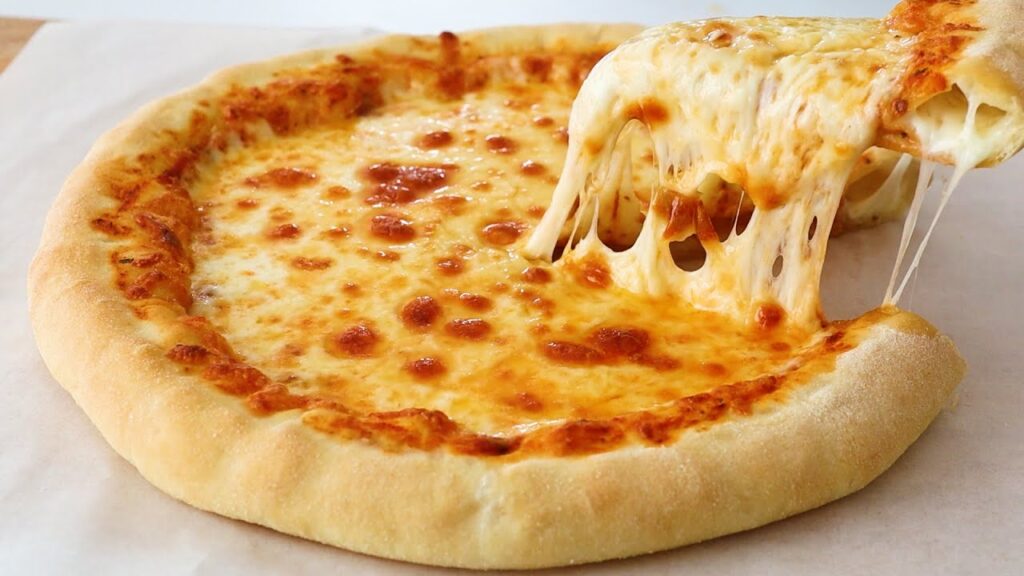
A cheese pizza typically consists of a pizza crust, tomato sauce, and cheese. The number of calories in a slice of cheese pizza can vary depending on the size and thickness of the crust, the amount and type of cheese used, and the serving size. However, on average, a slice of cheese pizza (1/8th of a 14-inch pizza) contains approximately 200-300 calories.
Cheese pizza can be a relatively low-calorie food, it is also high in fat and sodium, especially if extra cheese is added. Additionally, consuming too much pizza or relying on it as a primary source of nutrition can lead to health problems. As with any food, moderation is key, and it’s always a good idea to check the nutrition information provided by the pizza restaurant or manufacturer for an accurate calorie count.
Pepperoni Pizza
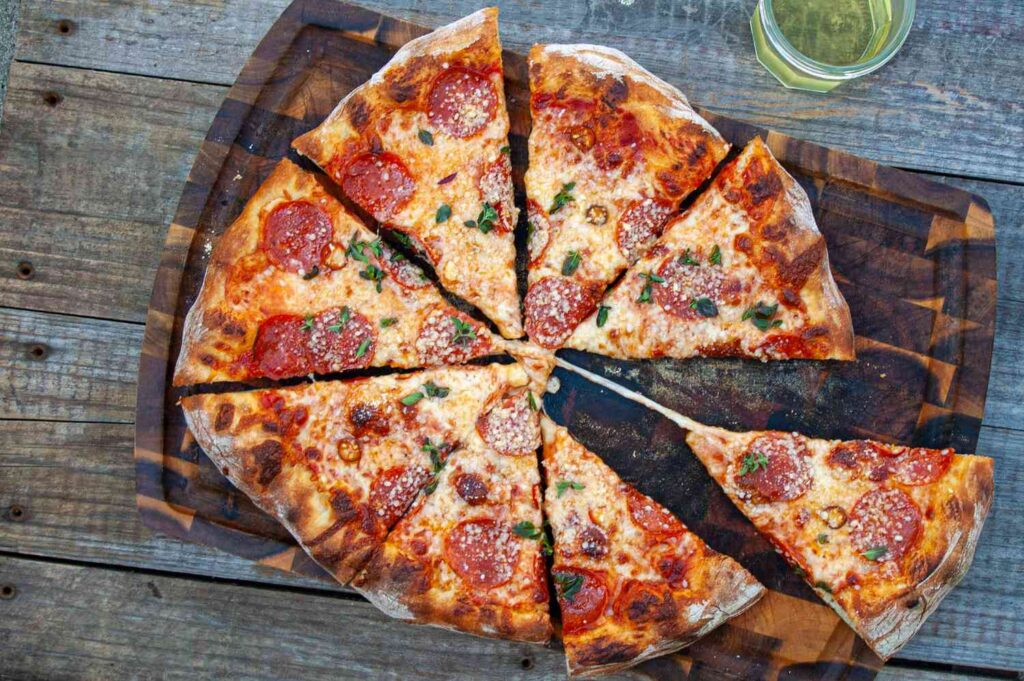
Pepperoni pizza is a popular type of pizza that features tomato sauce, cheese, and slices of pepperoni sausage on top. The number of calories in a slice of pepperoni pizza can vary based on the size and thickness of the crust, the amount of cheese used, and the number of pepperoni slices on the pizza. However, on average, a slice of pepperoni pizza (1/8th of a 14-inch pizza) contains approximately 300-400 calories.
Pepperoni pizza is high in fat, saturated fat, and sodium, which can increase the risk of heart disease and other health problems if consumed in large amounts or on a regular basis. Additionally, consuming too much pizza or relying on it as a primary source of nutrition can lead to health problems. As with any food, moderation is key, and it’s always a good idea to check the nutrition information provided by the pizza restaurant or manufacturer for an accurate calorie count.
Sausage Pizza
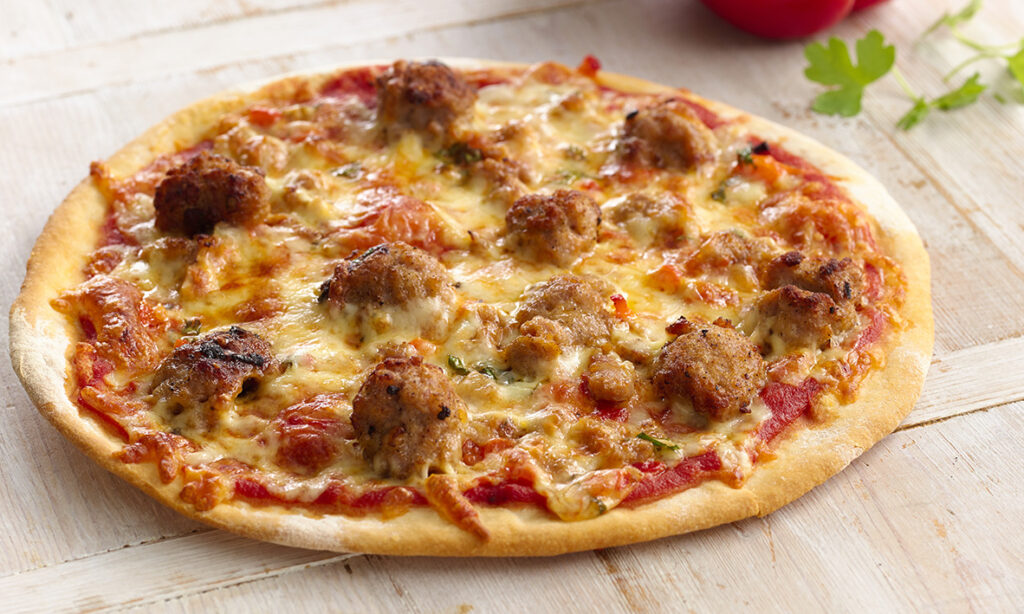
Sausage pizza is a type of pizza that features tomato sauce, cheese, and sausage on top. The number of calories in a slice of sausage pizza can vary depending on the size and thickness of the crust, the amount of cheese used, and the type and quantity of sausage on the pizza. However, on average, a slice of sausage pizza (1/8th of a 14-inch pizza) contains approximately 350-450 calories.
Sausage pizza is high in fat, saturated fat, and sodium, which can increase the risk of heart disease and other health problems if consumed in large amounts or on a regular basis. Additionally, consuming too much pizza or relying on it as a primary source of nutrition can lead to health problems. As with any food, moderation is key, and it’s always a good idea to check the nutrition information provided by the pizza restaurant or manufacturer for an accurate calorie count.
Veggie Pizza
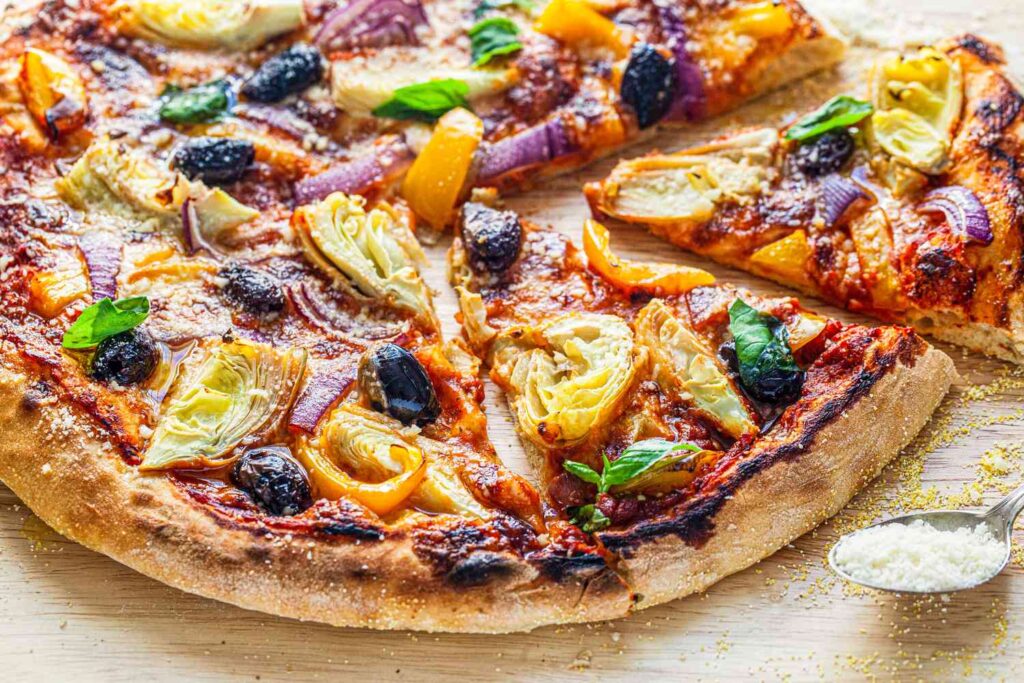
Veggie pizza is a type of pizza that typically features tomato sauce, cheese, and various vegetables as toppings, such as peppers, onions, mushrooms, olives, and sometimes even spinach. The number of calories in a slice of veggie pizza can vary depending on the size and thickness of the crust, the amount of cheese used, and the specific toppings used. However, on average, a slice of veggie pizza (1/8th of a 14-inch pizza) contains approximately 200-300 calories.
Veggie pizza is generally considered to be a healthier option than meat pizzas, as it contains more fiber, vitamins, and minerals. However, it’s important to note that the calorie count can increase if the pizza is loaded with cheese or high-calorie toppings such as avocado or pesto. As with any food, moderation is key, and it’s always a good idea to check the nutrition information provided by the pizza restaurant or manufacturer for an accurate calorie count.
Hawaiian Pizza
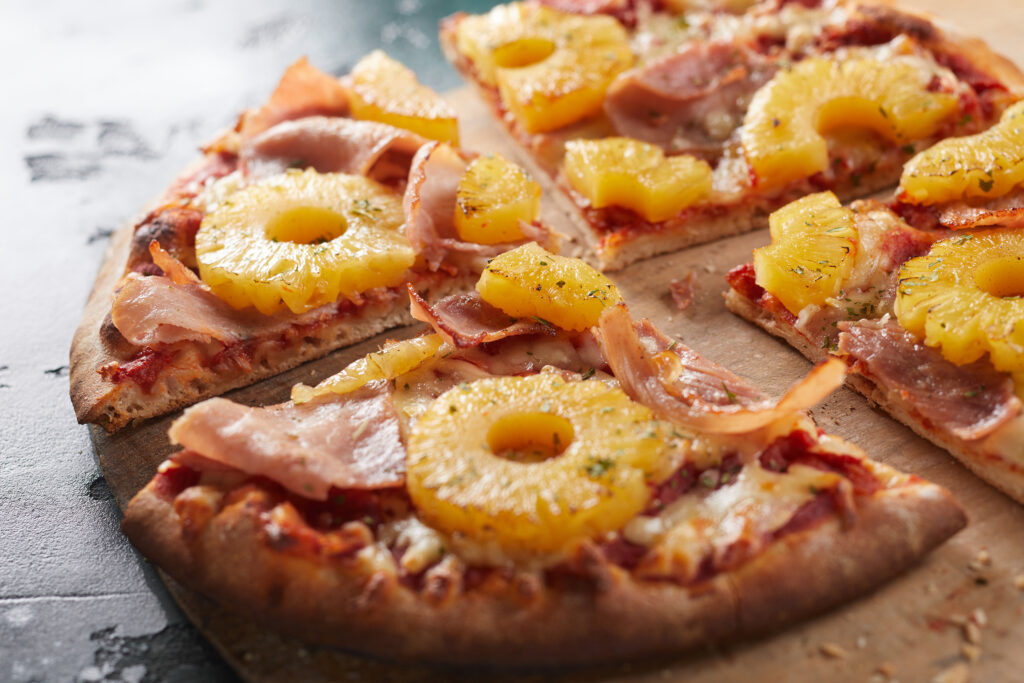
Hawaiian pizza is a type of pizza that features tomato sauce, cheese, ham, and pineapple as toppings. The number of calories in a slice of Hawaiian pizza can vary depending on the size and thickness of the crust, the amount of cheese used, and the specific type and quantity of ham and pineapple on the pizza. However, on average, a slice of Hawaiian pizza (1/8th of a 14-inch pizza) contains approximately 250-350 calories.
Hawaiian pizza can be high in sugar and sodium due to the addition of pineapple and ham. However, it can also be a good source of protein from the ham and cheese. As with any food, moderation is key, and it’s always a good idea to check the nutrition information provided by the pizza restaurant or manufacturer for an accurate calorie count.
BBQ Chicken Pizza
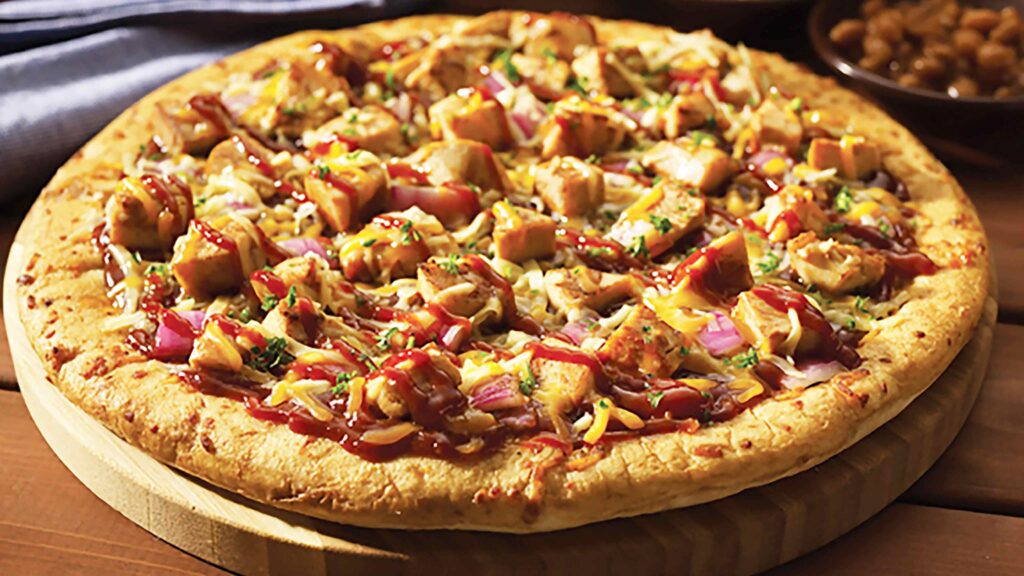
The number of calories in a BBQ chicken pizza can vary depending on the size, toppings, and ingredients used in the recipe. On average, a slice of BBQ chicken pizza from a standard 14-inch pizza may contain anywhere from 200 to 400 calories. A small personal-sized pizza may contain around 600 to 800 calories, while a larger 18-inch pizza may contain up to 500 to 800 calories per slice.
It’s important to keep in mind that the calorie count may also vary depending on the type of crust used, the amount of cheese and BBQ sauce added, and any additional toppings such as vegetables or meats. It’s always a good idea to check the nutrition information provided by the restaurant or to calculate the calories yourself if you’re making a homemade pizza.
Margherita Pizza
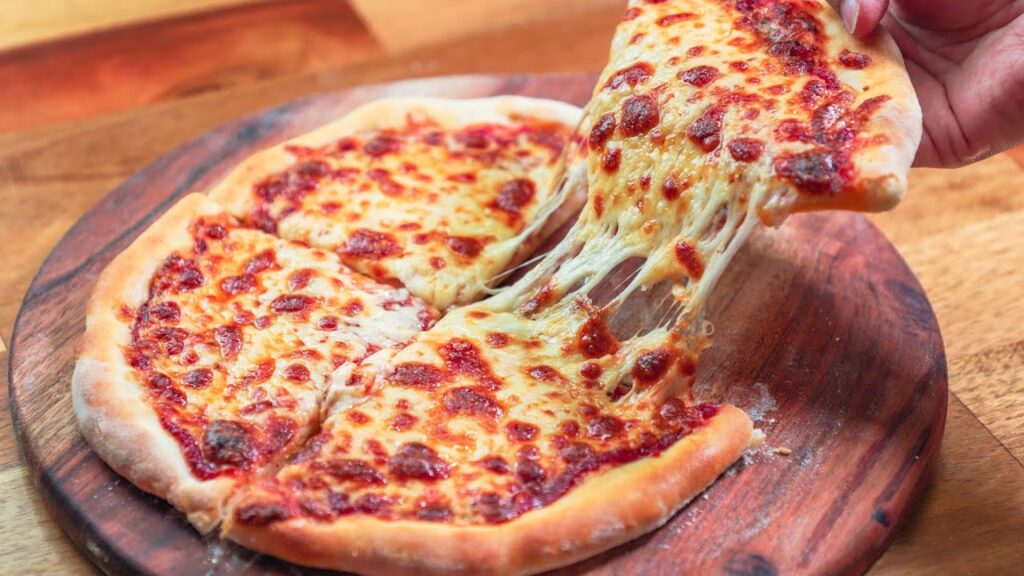
The number of calories in a Margherita pizza can vary depending on the size and the ingredients used to make it. However, a typical Margherita pizza made with a 12-inch crust, tomato sauce, fresh mozzarella cheese, and basil, will have approximately 130-250 calories per slice (1/8 of the pizza), depending on the thickness of the crust and the amount of cheese used.
Keep in mind that the actual calorie count may be higher if additional toppings, such as meats or vegetables, are added to the pizza. Additionally, different restaurants and brands may have slightly different calorie counts for their Margherita pizzas, so it’s always a good idea to check the nutrition information if it’s available.
Meat Lover’s Pizza
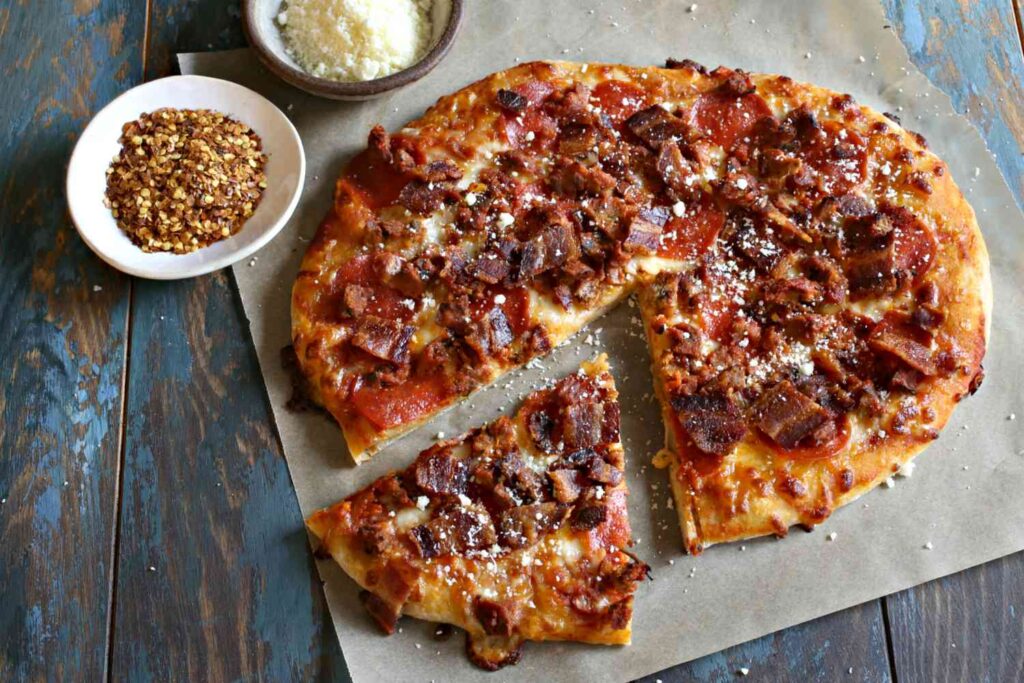
The number of calories in a Meat Lover’s Pizza can vary depending on the specific ingredients and the size of the pizza. However, as a general guideline, a standard 14-inch Meat Lover’s Pizza from a popular chain restaurant can have around 300-400 calories per slice.
A 14-inch Meat Lover’s Pizza typically contains a combination of meat toppings such as sausage, pepperoni, bacon, and ham, along with cheese and a tomato sauce base. These toppings can contribute significant amounts of calories and fat to the pizza.
Pizza Nutrition Facts
The nutrition facts of pizza can vary depending on the specific ingredients, size, and preparation method. However, as a general guideline, a 14-inch cheese pizza from a popular chain restaurant can have the following nutrition facts:
- Calories: 1,680
- Fat: 60g
- Saturated Fat: 25g
- Trans Fat: 1g
- Cholesterol: 125mg
- Sodium: 3,080mg
- Carbohydrates: 220g
- Fiber: 12g
- Sugar: 12g
- Protein: 76g
Healthy Diet Guidelines
Pizza can be a tasty and satisfying food, but it’s important to consume it in moderation and as part of a balanced diet. Here are some guidelines to help you make healthier choices when it comes to pizza:
- Choose a thin crust: Opt for a thin crust instead of a thick or stuffed crust as it can significantly reduce the calorie and carbohydrate content of the pizza.
- Load up on veggies: Add plenty of vegetables as toppings to increase the fiber and nutrient content of the pizza. Choose options like mushrooms, onions, peppers, and spinach.
- Go easy on the cheese: Cheese is a significant source of saturated fat and calories, so go easy on the cheese when ordering your pizza. Consider requesting less cheese or opting for a low-fat cheese option.
- Watch the meat toppings: Meat toppings like pepperoni, sausage, and bacon can significantly increase the calorie and fat content of the pizza. Consider limiting these toppings or choosing leaner options like grilled chicken or turkey.
- Control your portion size: Stick to a reasonable portion size when eating pizza, and avoid overeating. Consider sharing a pizza with a friend or saving some slices for leftovers.
- Make your own pizza: Making your own pizza at home can allow you to control the ingredients and make healthier choices. Opt for a whole wheat crust, load up on veggies, and choose lean protein options.
Remember, pizza can be a part of a healthy diet as long as it’s consumed in moderation and as part of a balanced diet.
Tips For Staying Healthy While Still Enjoying Pizza:
Here are some tips for staying healthy while still enjoying pizza:
- Choose a smaller size: Opt for a smaller size pizza instead of a larger one. This can help you control your portion sizes and limit your calorie intake.
- Load up on veggies: Adding vegetables as toppings can help boost the fiber and nutrient content of your pizza. Choose options like mushrooms, onions, peppers, spinach, or arugula.
- Consider thin crust: Thin crust pizza has fewer calories and carbohydrates than thicker crusts. It can also be a good idea to skip the stuffed crust.
- Watch the cheese: Cheese is a significant source of calories and saturated fat, so be mindful of how much cheese you are adding to your pizza. Consider choosing low-fat cheese options or asking for less cheese.
- Choose lean protein: Opt for lean protein options such as grilled chicken, turkey, or shrimp instead of higher calorie and fat options like sausage or pepperoni.
- Eat mindfully: Pay attention to your hunger cues and try to eat slowly and mindfully. This can help you feel satisfied with smaller portions and avoid overeating.
- Balance your meal: Consider pairing your pizza with a side salad or vegetable soup to add more nutrients to your meal.
Remember, moderation and balance are key to enjoying pizza while still maintaining a healthy diet. Enjoy your pizza as an occasional treat, and make sure to balance it out with plenty of other nutrient-rich foods.
FAQs Of How Many Calories In A Slice Of Pizza
1. Can I eat pizza while on a diet?
Yes, you can eat pizza while on a diet. Just be mindful of the calorie content and make healthier choices by opting for thin crust pizza, loading up on vegetables, and choosing lean protein toppings.
2. What is the healthiest type of pizza?
The healthiest type of pizza is typically a thin crust pizza with plenty of vegetable toppings and lean protein, such as grilled chicken or shrimp.
3. How many slices of pizza should I eat?
The number of pizza slices you should eat depends on your individual calorie needs and goals. A good rule of thumb is to aim for one to two slices and pair them with a side salad or vegetable dish.
4. Is pizza bad for you?
Pizza can be high in calories, fat, and sodium, especially if it’s loaded with cheese and meat toppings. However, by making healthier pizza choices and enjoying it in moderation, it can still be a part of a balanced diet.
5. Can I make my own healthier pizza at home?
Yes, you can make your own healthier pizza at home by using a thin crust, loading up on vegetables, and choosing lean protein toppings. You can also experiment with low-fat cheese and using pesto or olive oil instead of traditional tomato sauce.
6. How many calories are in a slice of thin-crust cheese pizza?
The number of calories in a slice of thin-crust cheese pizza can vary depending on the size of the slice and the specific ingredients used. However, as a general guideline, a typical slice of 14-inch thin-crust cheese pizza from a popular chain restaurant can contain around 200 to 300 calories. Again, the exact number can vary based on factors such as the thickness of the crust and the amount of cheese used. If you are looking to track your calorie intake, it’s always a good idea to check the nutrition information provided by the restaurant or to use a nutrition-tracking app to help you stay on top of your diet.
7. How many calories are in a slice of pepperoni pizza?
The number of calories in a slice of pepperoni pizza can vary depending on the size of the slice, the crust, the amount of cheese, and the type of pepperoni used. As a general guideline, a typical slice of 14-inch pepperoni pizza from a popular chain restaurant can contain around 300 to 350 calories. However, the exact number can vary widely based on the specific pizza and the size of the slice. It’s important to keep in mind that pepperoni is a high-fat and high-calorie topping, so if you’re looking to cut back on your calorie intake, it may be a good idea to opt for a healthier topping option or to limit your consumption of pepperoni pizza.
8. How much pizza is too much?
The amount of pizza that is too much can vary from person to person depending on factors such as age, gender, weight, activity level, and overall health. However, as a general guideline, it’s a good idea to practice moderation when it comes to pizza and other high-calorie, high-fat foods.
9. Can I eat a slice of pizza every day?
Eating a slice of pizza every day is not recommended as part of a healthy diet. Pizza can be high in calories, fat, and sodium, especially depending on the type of crust, cheese, and toppings. Eating pizza every day can increase your risk of weight gain and other health problems, including high blood pressure and heart disease.
10. Can I eat a whole pizza?
Eating a whole pizza in one sitting is not recommended as it can be excessive in calories, fat, and sodium. A typical large pizza can have anywhere from 1,000 to 2,000 calories or more, depending on the type of crust, cheese, and toppings. Eating a whole pizza in one sitting can lead to weight gain, digestive issues, and other health problems.
11. Which pizza has the highest calories?
The type of pizza with the highest calories varies from one place to another, but typically, deep-dish pizzas tend to have a higher calorie count than thin-crust pizzas. So if you’re looking for a pizza with the highest calories, a deep dish is the way to go.
Why? Deep-dish pizzas generally require more dough and toppings than regular-crust pizzas. This results in a thicker pizza, which can add an extra 50-100 calories per slice.
Conclusion
Understanding how many calories in a slice of pizza can help you make healthier choices if you’re watching your diet. Different types of pizza have different calorie counts, so be sure to check the label before indulging.
Also, by making small changes like opting for thin crusts and high-quality toppings, you can create a healthier pizza meal. Finally, remember to practice moderation when it comes to eating pizza.
So next time you’re wondering how many calories in a slice of pizza, you’ll have the answers you need to make healthy dietary choices. With this knowledge about pizza nutrition, you can make better decisions about what to eat.
We hope this blog post has helped you understand the calorie content of pizza better. If you have any questions about pizza calories, please don’t hesitate to leave a comment below. We’d be happy to help.
Enjoy your favorite pizza meal and stay healthy!

